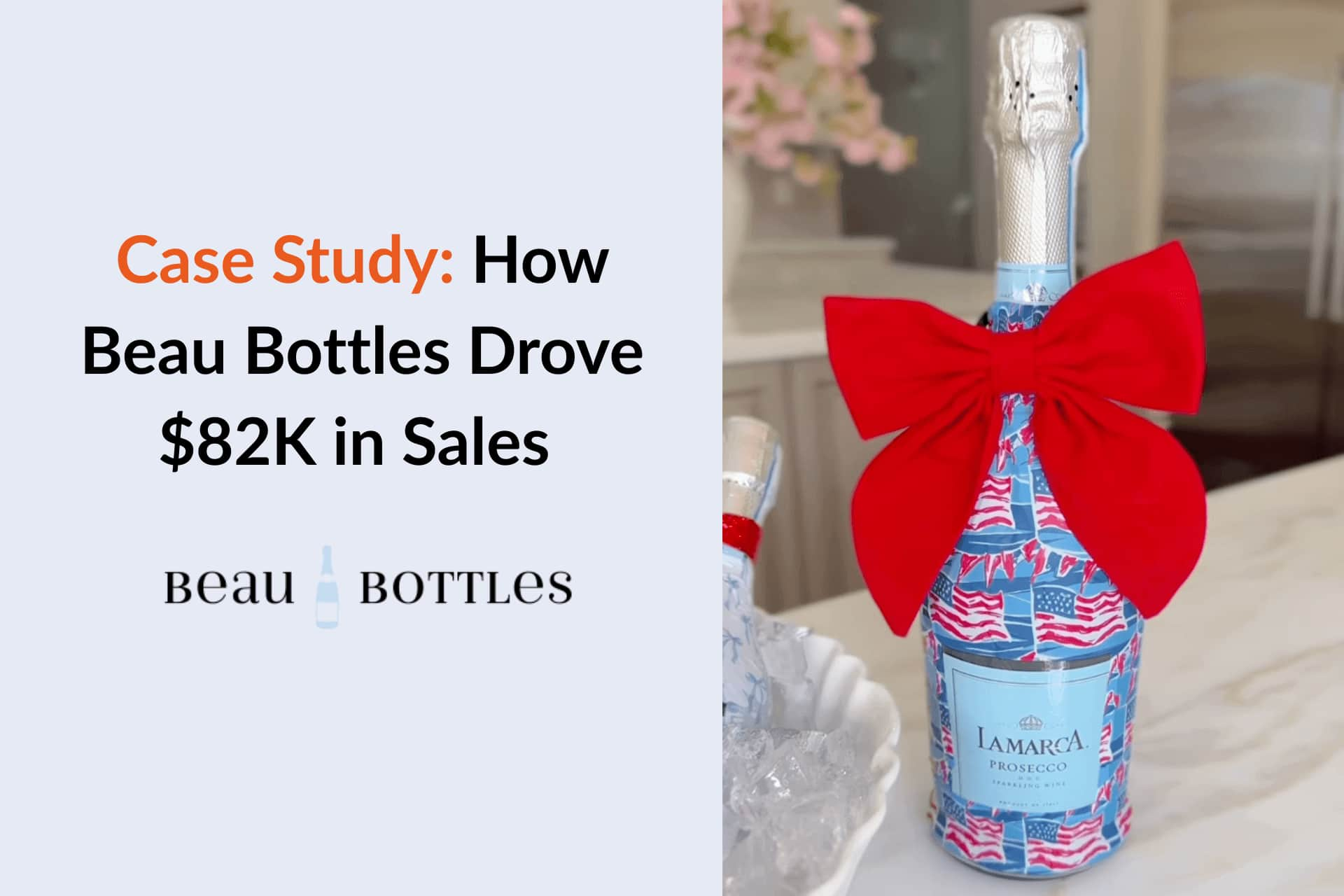





Many brands turn to InfluencerMarketing.Ai for influencer discovery, campaign management, and performance tracking, but for many marketers, it doesn’t go far enough. Common complaints from users include a clunky user interface, limited integrations with eCommerce platforms, and inconsistent influencer data quality.
As a result, D2C brands and agencies looking to scale often start searching for IMAI alternatives that offer more robust analytics, easier workflows, and better support.
In this article, we compare 10 leading alternatives to IMAI by features, pricing, and platform coverage, focusing on tools used by DTC and enterprise marketing teams. Let’s dive into the top 10 InfluencerMarketing.Ai alternatives that can elevate your marketing strategy:
1. Influencer Hero
2. Modash
3. Upfluence
4. Captive8
5. CreatorIQ
6. HypeAuditor
7. Grin
8. Saral
9. Onclusive
10. MOGL
Here are specific reasons why users are actively seeking IMAI alternatives, based on user feedback:
Several users report being charged after canceling their subscription, even when done through official channels like the website and email support. In multiple cases, IMAI billed users the full monthly fee despite cancellations being made before the billing renewal date. This has led to frustration and mistrust. (G2)
Users have shared that after payment issues or technical problems, it’s almost impossible to speak with a real person promptly. The platform relies heavily on an AI chatbot for support, which often loops users through vague responses without escalating to human assistance.
Even when users were told they’d retain access until the end of the paid period, many lost access immediately after canceling. This contradicts the messaging shown during cancellation and has disrupted ongoing campaigns and reporting efforts. Brands paying premium rates expect uninterrupted service until the end of their billing cycle, something IMAI has reportedly failed to deliver.
Our comparison focuses on several key aspects:
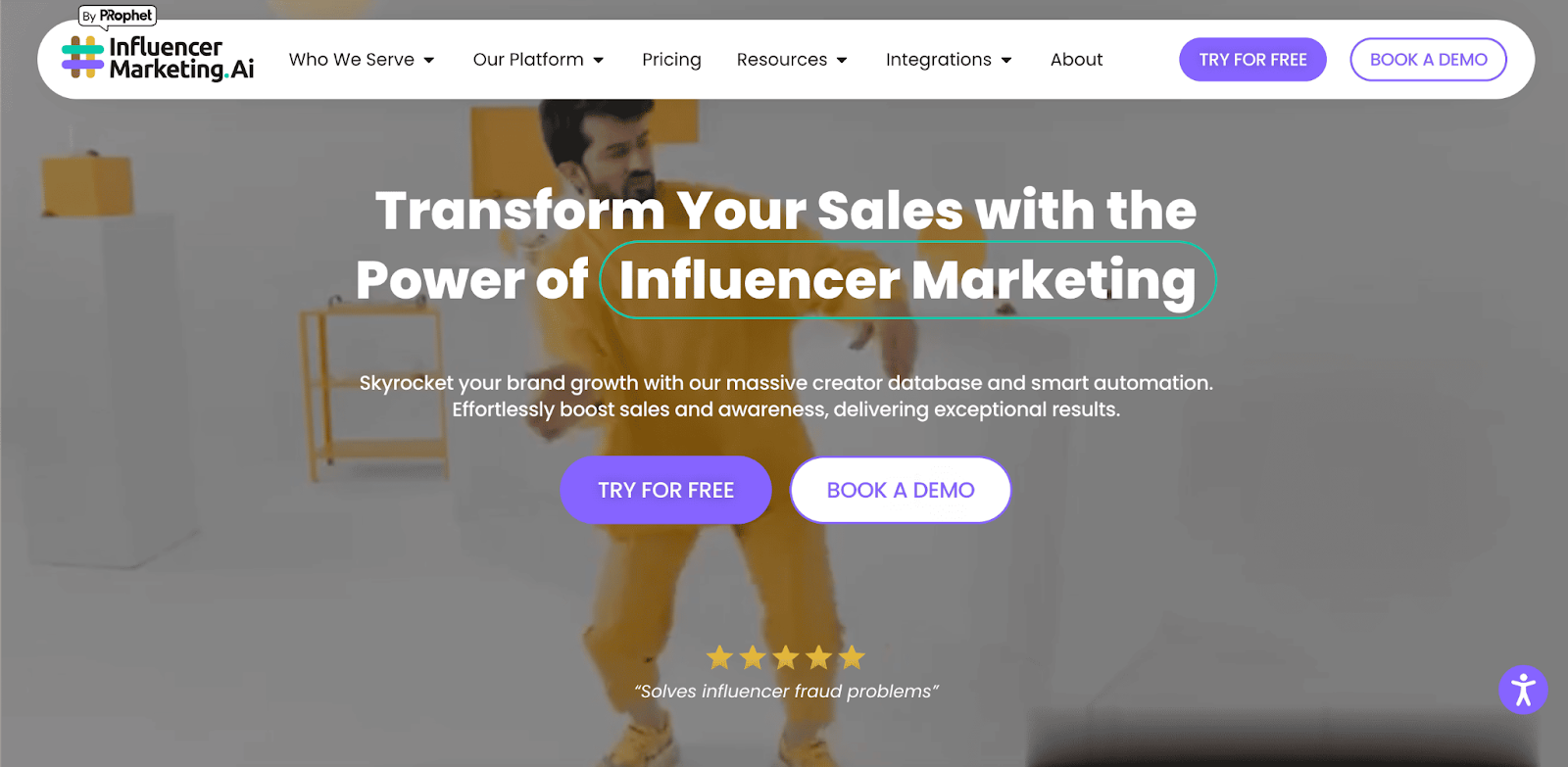
Platform Coverage: Instagram, TikTok, YouTube, Snapchat, Twitch, X (formerly Twitter), and LinkedIn.
Best For: IMAI is best for brands and agencies looking to scale their influencer marketing campaigns with the largest global influencer database, particularly those seeking multi-platform campaigns and in-depth analytics to drive ROI.
Pricing: All plans available annually or monthly. Both Growth and Scale plans offer a free trial.
Additional:
Reviews: 4.5 / 5.0 (G2)
Ease of Use (UX/UI): Users highlight IMAI’s intuitive interface and say the platform is “easy to navigate even for first-time users.” The dashboard layout and AI suggestions simplify complex tasks like influencer discovery and analytics.
Customer Support: IMAI is praised for having a very responsive and helpful customer support team. Reviewers mention that the onboarding process is smooth and that the support team is readily available via chat and calls, especially when running large campaigns.
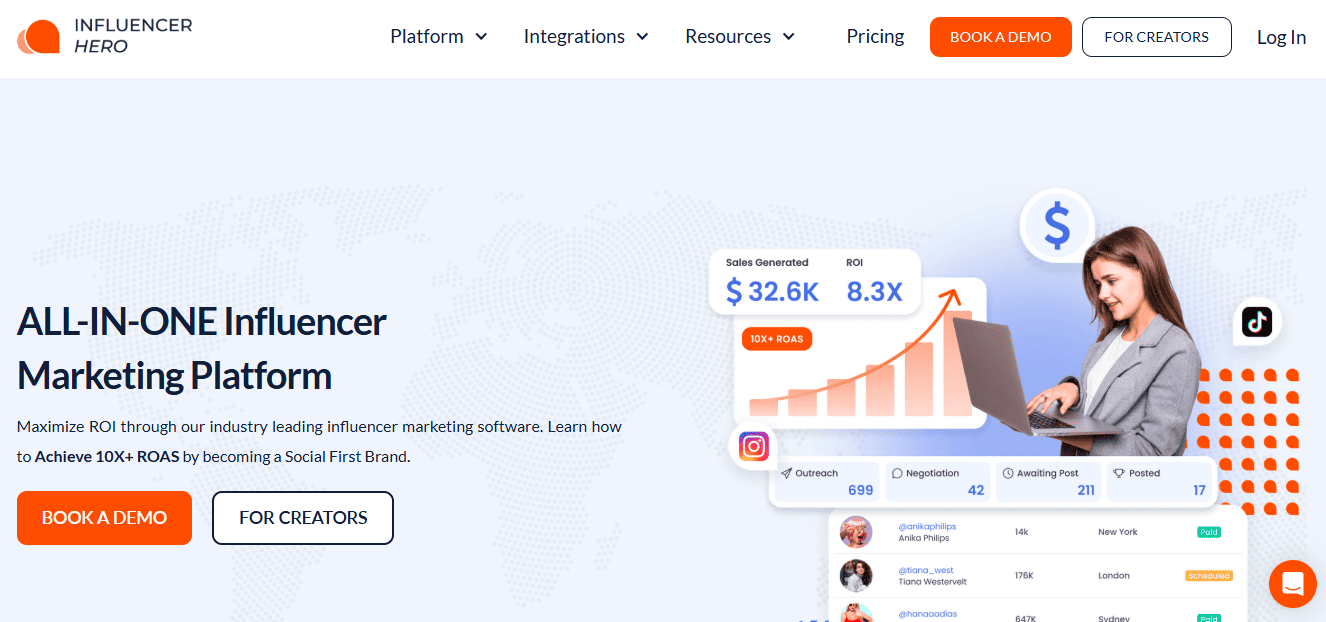
Platform Coverage: Instagram, TikTok, YouTube, Facebook, Pinterest, Snapchat, X, Twitch
Best For: Ideal for growing D2C brands and eCommerce teams looking to scale influencer marketing and affiliate campaigns across multiple platforms with deep analytics and automation capabilities.
Pricing: (Plans are monthly and scalable.)
Reviews: 5.0 / 5.0 (Capterra)
Ease of Use (UX/UI): Recognized for its clean, intuitive interface and user-friendly design. The drag-and-drop workflows, automated outreach, and customizable templates allow even non-technical teams to launch campaigns quickly and efficiently.
Customer Support: Offers 24/7 real-human live chat, responsive email support, and an in-depth Help Center with guides and video tutorials. Every customer is assigned a dedicated account manager from day one, with strategy consultations available. Pro plan users also gain access to a private Slack channel for ongoing, real-time support.
While IMAI boasts a massive global influencer database of over 400 million profiles and strong platform coverage, it comes with steep pricing tiers and costly add-ons like API access and managed services.
Influencer Hero, on the other hand, offers a more balanced and transparent pricing model starting at $649/month, making it accessible for growing eCommerce brands and D2C teams without sacrificing powerful features.
Unlike IMAI, which can be complex to navigate for new users, Influencer Hero stands out with its user-friendly UX, intuitive workflows, and built-in automations designed to simplify every step of the campaign.
While both platforms offer AI features, Influencer Hero includes full CRM automation, real-time analytics, and product gifting integrations, all backed by premium support and onboarding included in every plan.
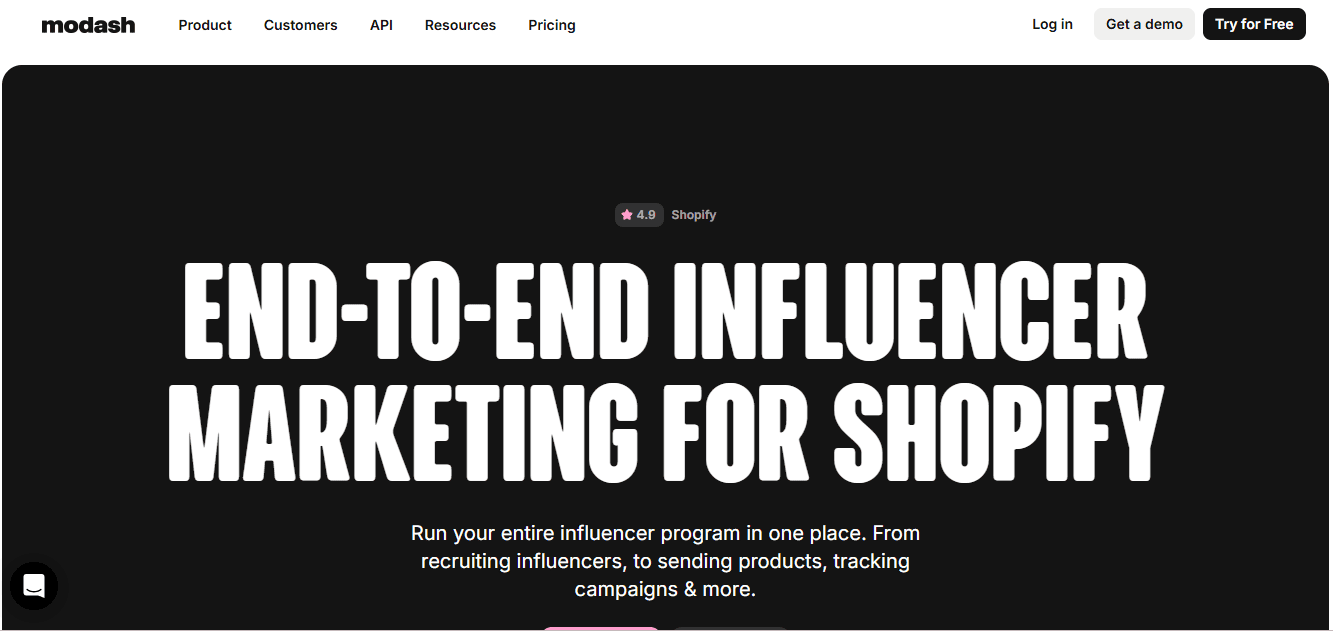
Platform Coverage: Instagram, TikTok, YouTube, and offers profile recognition for platforms like X, Snapchat, and others.
Best For: Ideal for eCommerce brands and performance marketers looking to manage influencer campaigns end-to-end, with strong Shopify integration and streamlined affiliate tracking.
Pricing: Modash offers free trials to both their Essentials and Performance plan.
Reviews: 4.9 / 5.0(Capterra.com)
Ease of Use (UX/UI): Modash is widely praised for its clean, intuitive interface and streamlined UX. Users particularly appreciate how easy it is to run searches, send outreach, and manage creators all in one place without needing to jump between tools.
Customer Support: Customers report excellent onboarding and ongoing support, often highlighting the responsiveness of the Modash team and their willingness to offer hands-on assistance. Support resources include live chat, personalized demos, and platform training.
If you're a global agency managing large-scale campaigns, IMAI’s depth might be worth the investment. But if you're an eCommerce brand prioritizing affordability and simplicity with a focus on Shopify integration, Modash stands out as the more streamlined solution.
IMAI has a significantly larger global database (400M+ profiles) and covers a wider range of platforms including LinkedIn and Twitch, making it more suitable for global agencies running multi-market, multi-platform campaigns. However, it comes at a higher cost, starting at $959/month with add-ons like API access and influencer payments costing extra.
Modash, on the other hand, focuses on simplicity, affordability, and performance-driven influencer marketing. It’s ideal for DTC brands that rely heavily on Shopify, need strong discovery tools, and want automated affiliate and gifting workflows. With plans starting at $199/month, Modash offers a more accessible entry point for growing teams and leaner marketing departments.

Platform Coverage: Instagram, TikTok, YouTube, X , Twitch, Pinterest, WordPress blogs.
Best For: Upfluence is best suited for mid-size to large eCommerce brands and agencies looking to integrate influencer marketing with affiliate programs, manage seeding campaigns, and leverage influencer data to drive conversions across multiple platforms.
Pricing: Upfluence offers annual contracts with the following pricing.
Reviews: 4.6 / 5.0 (G2)
Ease of Use (UX/UI): Users describe Upfluence as professional and comprehensive, though some mention the platform can be overwhelming for beginners. Its UI is clean and functional, with built-in automation features that simplify campaign execution once the platform is fully set up.
Customer Support: Generally receives positive reviews for customer service, with users appreciating the onboarding process and dedicated support team. Some reviews mention occasional delays in response times, especially for technical inquiries, but overall sentiment is favorable for enterprise-level support.
IMAI and Upfluence both offer powerful influencer discovery, campaign tracking, and analytics capabilities, but their strategic focus differs.
IMAI emphasizes scale, with a massive 400M+ influencer database and full multi-platform support (including LinkedIn and Twitch), which makes it highly attractive for large agencies managing global influencer campaigns. Upfluence, while smaller in reach, differentiates itself through strong eCommerce integrations and affiliate-focused features, making it ideal for DTC brands.
From a pricing perspective, IMAI starts at $959/month, while Upfluence begins around $795/month depending on the contract and features selected. IMAI’s advanced add-ons like API and influencer payments can push total costs significantly higher.
Upfluence offers more flexible eCommerce integrations and a user experience more tailored for performance marketing, while IMAI remains the go-to for teams prioritizing breadth and scale in influencer discovery.

Platform Coverage: Captiv8 supports influencer campaigns across Instagram, YouTube, TikTok, Facebook, Twitter, and Pinterest.
Best For: Captiv8 is best for large enterprises and agencies running multi-brand influencer campaigns who need advanced reporting, competitive intelligence, and team-wide collaboration tools.
Pricing:
No monthly or customizable plans are available; pricing is rigid and enterprise-focused
Reviews: 4.6 / 5.0 (G2)
Ease of Use (UX/UI): Users find Captiv8’s platform robust but complex, with a learning curve to navigate its many features. That said, customizable reports, reusable search filters, and real-time collaboration make the user experience efficient once onboarded.
Customer Support: While some enterprise users report dedicated support, many creators and smaller brands have voiced frustration about unresponsive service and unresolved payment issues. Multiple Reddit threads mention delays in both brand deposits and creator payouts.
For brands that prioritize influencer reach, scalable campaigns, and lower entry costs, IMAI offers broader capabilities. But for enterprise teams needing deep reporting, creative collaboration, and competitor insights, Captiv8 may be worth the investment.
It focuses heavily on competitive intelligence, customizable reporting, and real-time collaboration tools for agencies managing multiple stakeholders. IMAI, on the other hand, offers unmatched reach with 400M+ influencers and supports more platforms, including LinkedIn and Twitch, making it better suited for global discovery and broad influencer targeting.
Pricing also differs significantly. Captiv8 starts at $25,000 annually plus additional costs for affiliate and storefront features, while IMAI begins at $959/month with optional paid add-ons.

Platform Coverage: Instagram, TikTok, YouTube, Facebook, Pinterest, Twitch, X.
Best For: CreatorIQ is best for large brands and agencies running global, multi-platform influencer campaigns who need robust analytics, CRM-level creator management, and deep social platform integrations. It’s especially ideal for enterprise teams requiring scale, compliance, and cross-functional collaboration tools.
Pricing:
Reviews: 4.6 / 5.0 (G2)
Ease of Use (UX/UI): The platform is comprehensive and professional, though it can feel overwhelming at first due to the volume of features. Once set up, teams find the workflows logical and efficient, with intuitive campaign creation, real-time dashboards, and accessible data exports.
Customer Support: Clients benefit from dedicated implementation managers, customer success teams, and strategic quarterly planning. Many users mention that onboarding is smooth and that the support team is proactive in helping with setup and ongoing optimization.
While both CreatorIQ and IMAI serve large brands, CreatorIQ focuses more on enterprise-grade infrastructure and direct social platform partnerships.
Its strength lies in real-time API integrations, strategic onboarding, and end-to-end creator management, from CRM to payments and reporting. IMAI, by contrast, offers massive global reach with 400M+ influencer profiles and emphasizes discovery scale and database size over enterprise services.
Pricing-wise, CreatorIQ starts at $35,000/year, making it more expensive than IMAI’s entry point at $959/month. IMAI may be a better fit for teams prioritizing influencer reach and lower upfront costs, while CreatorIQ is better suited to larger organizations that need custom reporting, built-in financial compliance, and scalable support systems built into their workflow.

Platform Coverage: Instagram, TikTok, YouTube, Twitch, X (Twitter), Snapchat
Best For: Large brands, agencies, and eCommerce companies looking to run data-driven influencer campaigns with deep analytics, influencer vetting, and ROI tracking. It’s especially strong for those focused on fraud detection and audience quality analysis across multiple platforms.
Pricing: Custom plans based on usage. Flexible contract terms depending on platform access, campaign volume, and number of reports.
Reviews: 4.5 / 5.0 (G2)
Ease of Use (UX/UI): Users note that the platform is feature-rich but can feel complex at first, especially for teams new to influencer marketing. The dashboard provides powerful customization options, clear visuals, and intuitive navigation for advanced users.
Customer Support: Receives positive feedback for its responsive customer support and detailed onboarding assistance. Users say the team is knowledgeable and proactive in helping with campaign setup and technical questions. Live demos, documentation, and regular check-ins support a professional experience.
IMAI excels in sheer influencer database size (400M+ profiles), bulk outreach, and ease of use with a well-rounded feature set for influencer discovery and content management. HypeAuditor, on the other hand, emphasizes deep analytics, audience quality scoring, and campaign ROI tracking, making it ideal for brands that prioritize fraud detection and performance benchmarking.
When comparing pricing, IMAI offers more accessible monthly plans starting at $959/month (Growth plan), while HypeAuditor’s Business plan starts at around $10,000/year. However, HypeAuditor provides customized plans and a limited free trial.
Brands seeking powerful analytics and competitor tracking may lean toward HypeAuditor, while those looking for high-volume discovery and more accessible pricing might prefer IMAI.
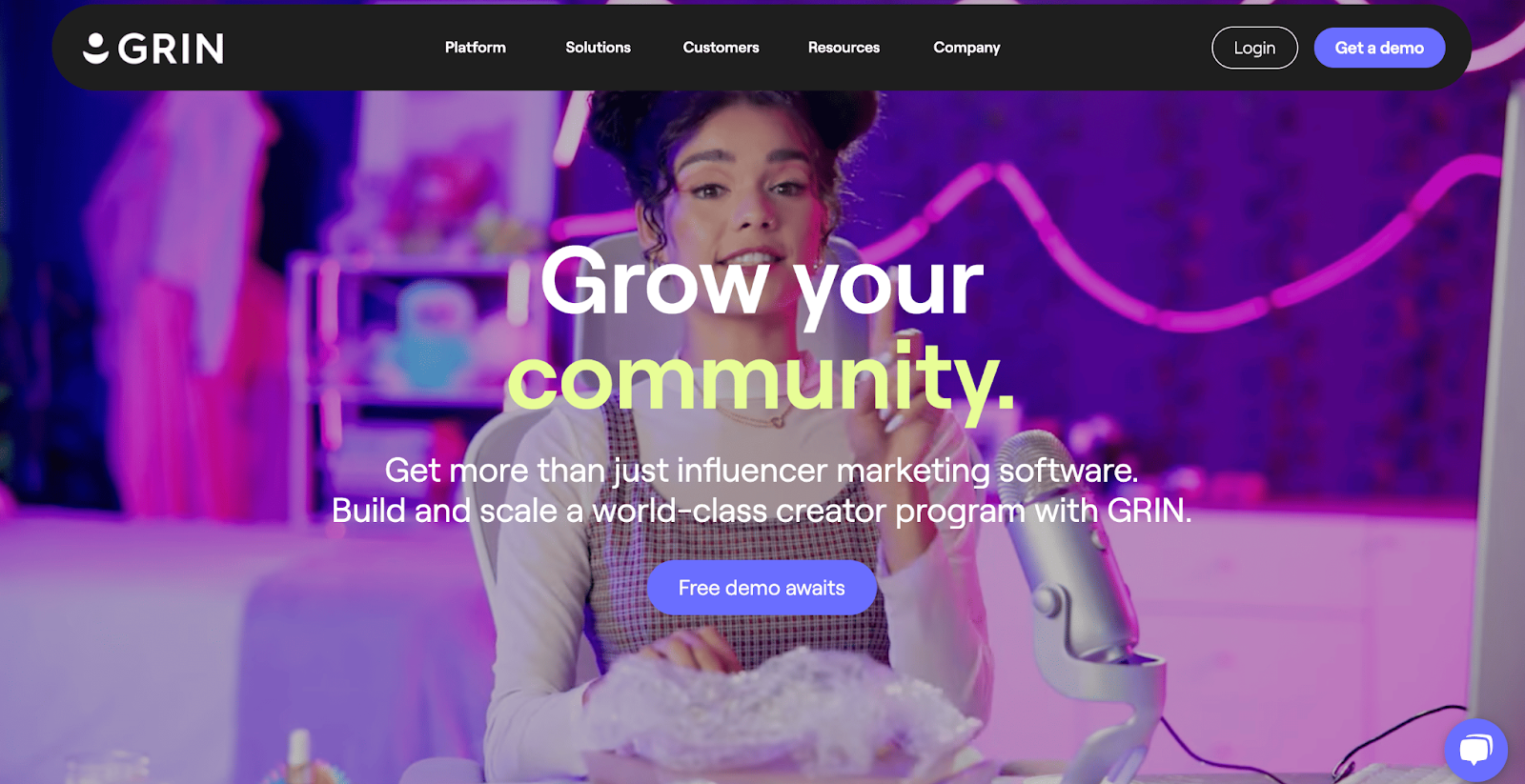
Platform Coverage: Instagram, TikTok, YouTube, X, Twitch, Snapchat
Best For: eCommerce and DTC brands looking to scale influencer marketing with seamless Shopify and WooCommerce integrations, comprehensive affiliate tracking, and end-to-end campaign automation, from influencer discovery to UGC collection and performance reporting.
Pricing: Plans start at $25,000 per year, with monthly payments available and a required 12-month commitment; typical monthly costs range from $2,500 to over $10,000 depending on usage, though pricing transparency may vary based on selected features.
Reviews: 4.5 / 5.0 (G2)
Ease of Use (UX/UI): Clean dashboard and ability to manage every stage of the influencer workflow within one interface. However, some mention that certain areas, like the creator search and duplicate handling, could be more intuitive or refined. Once set up, it's viewed as a powerful system, especially for teams managing high-volume campaigns
Customer Support: While many users highlight helpful onboarding and dedicated strategist options, others report slow response times. The availability of hands-on support through dedicated strategists is a plus, but consistency seems to vary across users.
While GRIN is a strong choice for eCommerce brands needing full-stack management, IMAI may be the better pick for teams seeking broader platform coverage and faster onboarding at a more scalable cost.
IMAI shines with its massive influencer database (400M+ profiles) and multi-platform reach, making it ideal for brands prioritizing global discovery and analytics. GRIN, in contrast, is purpose-built for eCommerce brands, offering deep Shopify and WooCommerce integrations and a fully unified CRM and outreach system.
When it comes to pricing, IMAI offers more flexible and accessible monthly plans starting at $959/month, whereas GRIN’s plans typically begin at $25,000/year, with annual contracts and monthly payment options.
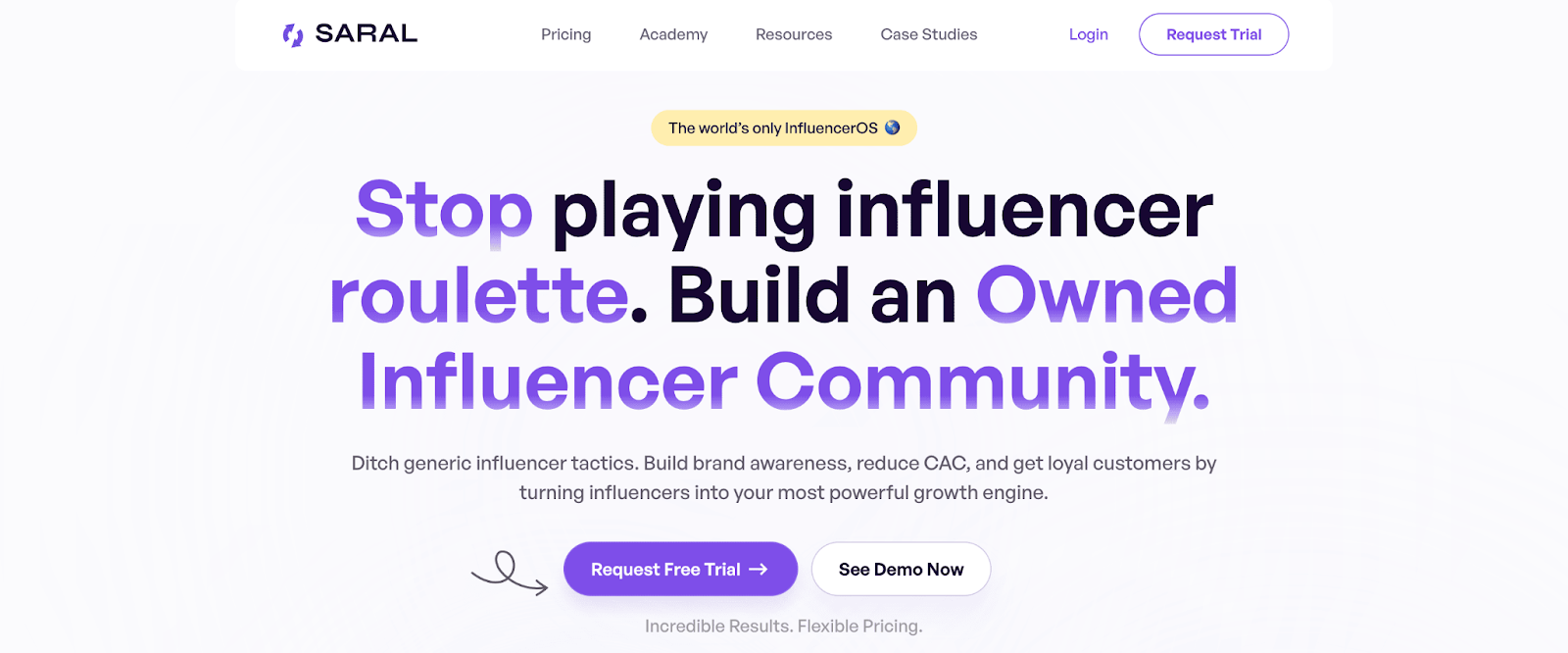
Platform Coverage: Instagram, TikTok, YouTube.
Best For: Emerging and mid-sized eCommerce brands looking for an all-in-one, streamlined platform to manage influencer discovery, gifting, outreach, and affiliate tracking. It’s especially suited for product-based brands seeking scalable gifting workflows.
Pricing: Saral offers volume-based plans with a 1-week free trial. Quarterly and annual payment options are available:
Reviews: 4.7 / 5.0 (G2)
Ease of Use (UX/UI): The platform is designed to reduce complexity and make influencer campaigns feel manageable, even for lean teams. Most users find onboarding quick, with an intuitive dashboard and helpful templated workflows that eliminate guesswork.
Customer Support: Saral is praised for its highly responsive support team. Brands note that the Saral team goes above and beyond, offering hands-on assistance, fast email replies, and proactive troubleshooting. Users also value the regular product updates and feedback loops, showing the team listens to user input.
IMAI and Saral cater to different needs within influencer marketing.
IMAI offers broader platform coverage, and is ideal for global discovery at scale with advanced reporting and analytics. Saral, by contrast, is built for leaner eCommerce teams who need a simple but powerful gifting and outreach system without the complexity or cost of enterprise tools.
In terms of pricing, Saral is more affordable, with plans starting at $3,600/quarter or $12,000/year, compared to IMAI’s Growth plan at $959/month. However, IMAI offers a much larger creator database and more advanced analytics features. Brands looking for quick ramp-up, intuitive workflows, and tight Shopify gifting integration may prefer Saral, while those seeking enterprise-grade discovery and data might opt for IMAI.
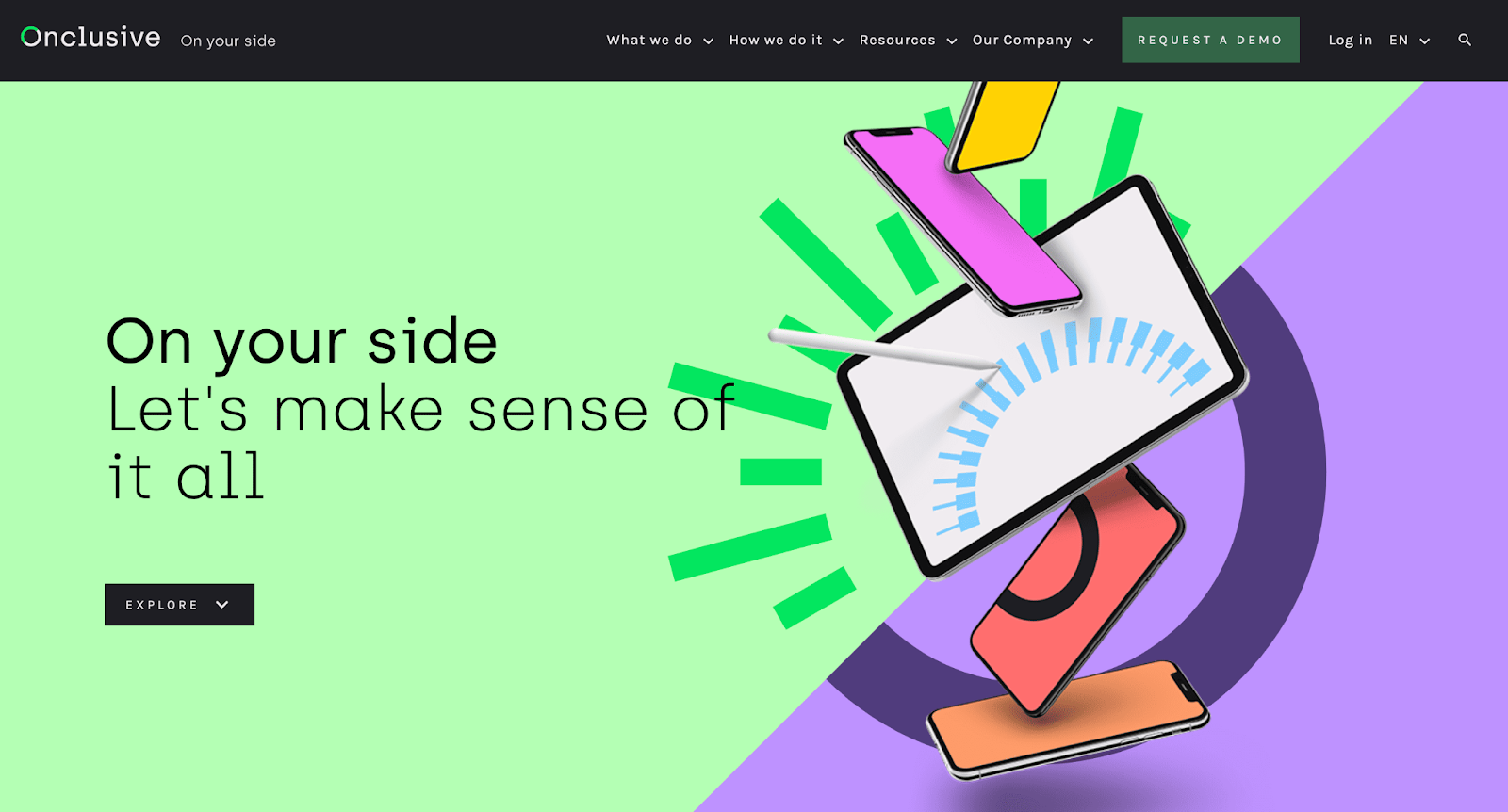
Platform Coverage: Instagram, TikTok, YouTube, X (Twitter), Reddit, Facebook, LinkedIn, Threads, BlueSky, WeChat, Weibo, and more. Also includes TV, radio, podcasts, online news, and print media via its Critical Mention integration.
Best For: PR, communications, and brand teams focused on earned media coverage, influencer monitoring, and cross-channel media intelligence. Ideal for brands needing a combination of influencer analytics, sentiment tracking, and media performance reporting across TV, radio, online news, and social media.
Pricing: Custom pricing based on scope and media types. Typically billed annually, but monthly options may be available upon request. Estimated range: $8,000 to $20,000/year.
Reviews: 4.5 / 5.0 (G2)
Ease of Use (UX/UI): Users describe Onclusive’s dashboard as robust but data-heavy, built more for media analysts than marketers. Some users report the interface feels slightly outdated, but the customizable dashboards and automated reports make it highly functional for advanced users.
Customer Support: Onclusive is praised for its dedicated account managers who assist with onboarding, custom queries, and ongoing support. Users highlight the personalized setup, query optimization help, and consistent check-ins, which make the platform feel more like a service than just a tool. Support is cited as a clear differentiator from competitors.
From a pricing perspective, IMAI’s Growth plan starts at $959/month, while Onclusive pricing ranges from $8,000 to $20,000 annually, depending on scope and features.
It’s a better fit for communications and PR teams looking to consolidate media monitoring, tailored more toward media intelligence, tracking influencer mentions, PR coverage, and more. IMAI in contrast, is built for scaling influencer marketing, offering tools like AI-powered outreach, CRM, and campaign analytics, with access to 400M+ creator profiles, ideal for marketing teams running product seeding, influencer campaigns, and UGC acquisition.
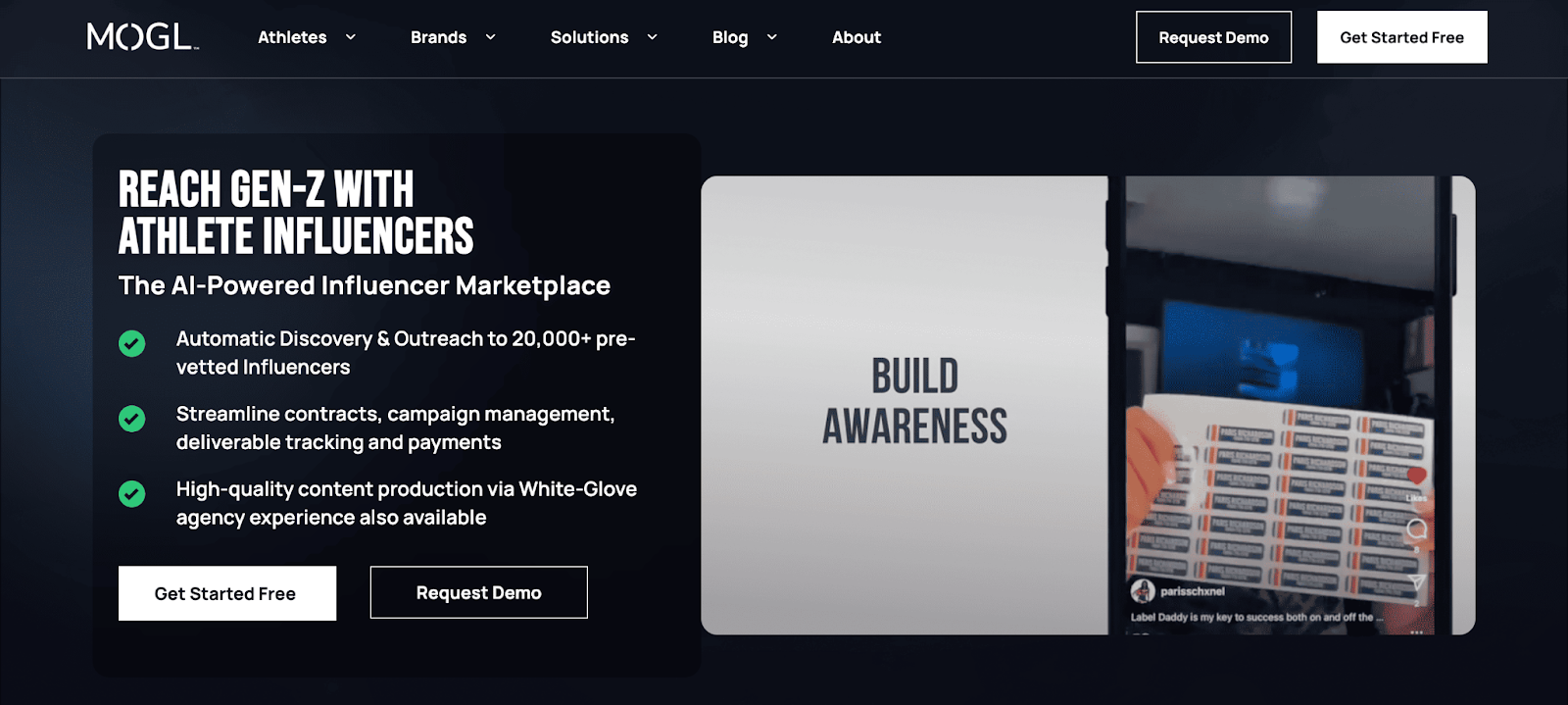
Platform Coverage: Primarily Instagram. Campaigns focus on U.S.-based athlete creators with some UGC support. No native TikTok or YouTube search functionalities mentioned.
Best For: Brands targeting Gen Z audiences, particularly those looking to partner with college athletes and micro-influencers. It's ideal for brands that want streamlined campaign management, performance-based payments, and simplified content usage rights with a strong focus on athletic creators.
Pricing: All plans offer unlimited campaigns and access to over 30,000 athlete creators.
Reviews: 4.0/5.0 (Capterra)
Ease of Use (UX/UI): Users describe MOGL’s platform as intuitive and straightforward, especially for teams new to influencer marketing. The job board-style campaign setup and automated messaging make collaboration easy. Some users mention that while the interface is clean, features like gifting logistics and external platform integrations could be more advanced.
Customer Support: MOGL is praised for its responsive chat support and dedicated customer success options for higher-tier plans. Brands using the managed service option note excellent communication and proactive guidance, while self-serve users appreciate the fast turnaround on troubleshooting and onboarding questions.
MOGL offers more accessible entry points with a Starter plan at $0/month (50% fee) and a Professional plan at $250/month + 20% fee, whereas IMAI starts at $959/month with broader platform coverage.
IMAI focuses on large-scale global discovery, AI-powered outreach, and analytics across 400M+ influencers across multiple platforms. In contrast, MOGL targets a niche creator base of U.S. athletes, offering performance-based payments, inbound applications, and simple campaign flows.
Brands focused on content licensing, automated payments, and low-risk influencer partnerships in the U.S. may lean toward MOGL, while those needing international reach, influencer analytics, and cross-platform campaigns will benefit from IMAI.
While InfluencerMarketing.Ai offers an extensive influencer database and strong multi-platform support, many users have voiced concerns around billing transparency, limited customer support, and a steep pricing structure with costly add-ons.
Among all alternative options, Influencer Hero stands out as the most comprehensive alternative to IMAI. It combines influencer discovery, CRM, outreach automation, affiliate tracking, and real-time reporting into one user-friendly platform, backed by 24/7 human support and seamless integrations with Shopify, WooCommerce, and Amazon.
Unlike IMAI’s high entry price and complex billing model, Influencer Hero offers scalable monthly plans starting at $649/month, making it accessible for both growing and mature eCommerce brands. For those looking to simplify their influencer marketing while maximizing ROI, Influencer Hero is a top-tier solution worth serious consideration.
Whether you're a growing DTC brand or an enterprise team, the right tool should align with both your workflow needs and budget flexibility.

Top alternatives include Influencer Hero, Modash, Upfluence, CreatorIQ, and GRIN. Influencer Hero is a standout option for its all-in-one features, strong eCommerce integrations, and transparent pricing from $649/month.
Common issues include billing problems, slow support, and loss of access after cancellation. Many brands look for more reliable, user-friendly, and cost-effective platforms.
Influencer Hero is ideal for eCommerce, with direct integrations to Shopify, WooCommerce, and Amazon. Modash and Upfluence are also strong options for online retail campaigns.
While IMAI offers a large database, Influencer Hero provides better usability, CRM automation, and real-time tracking—at a more flexible and affordable price point.
Yes. Modash (from $199/month) and Saral offer budget-friendly plans. Influencer Hero also provides full-featured plans from $649/month without requiring annual contracts.



Schedule a Demo with one of our media experts below.